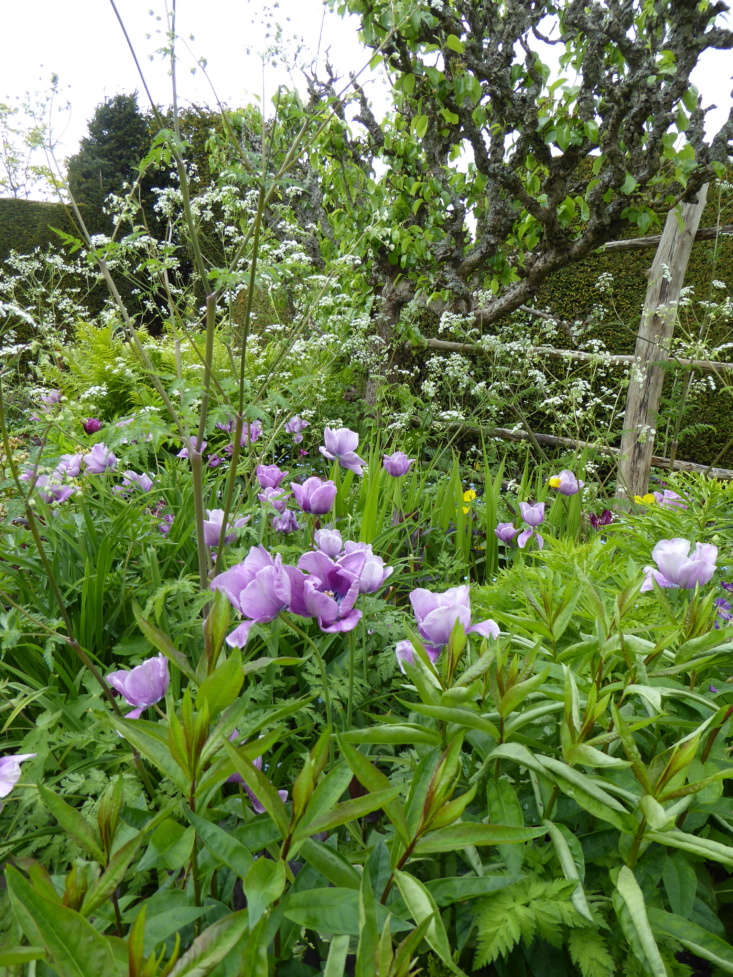In England, hedgerows froth with a creamy white haze of cow parsley as Anthriscus sylvestris (a cousin of Queen Anne’s lace) rises up from ditches, billowing along roadside verges and lighting up the perimeters of fields and meadows.
These are weeds. Or at least they used to be.
Nowadays cow parsley has found a champion in revered gardener Fergus Garrett, who oversees the gardens at Great Dixter, which everyone agrees are a national treasure. But cow parsley in the flower borders? Most rural gardeners are happy to let this short lived perennial linger, adding bucolic charm to the edges of rural gardens, but only the seriously brave invite cow parsley into the inner sanctum and allow it to feel thoroughly at home. Garrett is one of them.
Photographs by Clare Coulson.

Nothing sums up England in May like the airy umbels of cow parsley, especially when clustered under equally beguiling hawthorn trees or spilling over a post and rail fence. In the US, it is an early spring flower, peaking in May.

Although cow parsley and Queen Anne’s lace may look very similar, don’t be fooled if you’re planting seeds in a flower bed. Queen Anne’s lace (Daucus carota) has a denser umbel of tiny white flowers and is a safer alternative in the garden—it will self seed, but not as vociferously as cow parsley will.

In the Sussex gardens that Fergus Garrett oversees, cow parsley mingles with emerging perennials, creating a haze of white that floats above mounds of lush new foliage.

At a recent Garden Museum event in London, Garrett talked about his longstanding use of what many others would consider a rampant weed that they wouldn’t let anywhere near their borders. He said he’s currently taking part in a field trial at the Royal Horticultural Society’s gardens at Wisley, putting varieties of cow parsley through their paces. Cultivated forms include the beautiful dark-stemmed Anthriscus sylvestris ‘Ravenswing’ (which looks wonderful interspersed with dark moody flowers) or A. sylvestris ‘Golden Fleece’, which has soft lilac-tinged flowers.

As for a humble weed’s royal connections? When Prince Harry married Meghan Markle last month, white heads of cow parsley were incorporated into florist Philippa Craddock’s sublime flowers for St George’s Chapel, Windsor. Just like much of the native tree foliage and white roses, the peonies, and the foxgloves, it was plucked from Windsor Great Park and the Royal parkland.
Read more on this subject at Queen Anne’s Lace: A Field Guide to Planting, Care & Design. And if you’re planning to add a wild touch to a flower bed, see our favorite wildflowers in our curated guides to Annuals 101 and Perennials 101. Read more:
- Ask The Expert: How to Plant a Meadow Garden, with James Hitchmough
- Wild Flower Society: 10 Outside-the-Box Native Plants
DIY: Make Your Own Wildflower Seed Bombs









Have a Question or Comment About This Post?
Join the conversation